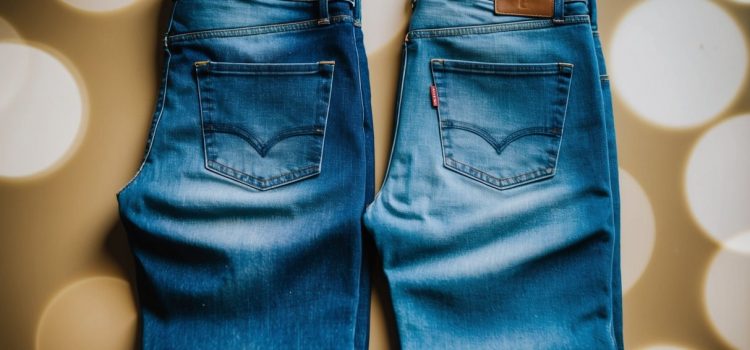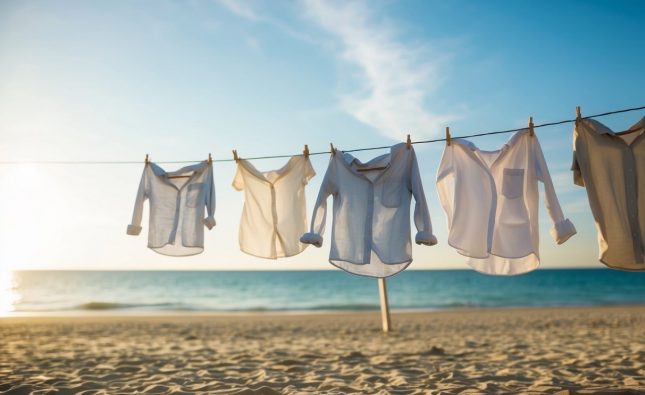
The choice between high-waisted and low-rise jeans continues to spark debate among fashion enthusiasts. Each style offers distinct advantages that cater to different body types and personal preferences. High-waisted jeans provide better support and create a flattering silhouette for many, while low-rise jeans offer a laid-back vibe that appeals to those seeking comfort and ease.

Style, comfort, and versatility are key factors to consider when deciding between these two options. High-waisted jeans tend to accentuate the waist and elongate the legs, making them a favorite for those aiming for a polished look. On the other hand, low-rise jeans can create a relaxed appearance, perfect for casual outings.
Ultimately, the best choice comes down to individual style and occasion. Understanding the unique features of both high-waisted and low-rise jeans can help anyone make an informed decision that suits their needs and enhances their wardrobe.
Historical Development of Jeans

Jeans have evolved significantly since their inception, reflecting changes in fashion and culture. High-waisted and low-rise styles emerged at different times, signaling shifts in societal norms and preferences.
Rise of High-Waisted Jeans
High-waisted jeans gained prominence in the mid-20th century, particularly during the 1980s and 1990s. This style was often associated with various subcultures, from disco to punk, embodying a sense of rebellion and individuality.
The design typically features a waistline that sits above the natural waist, offering a retro aesthetic. High-waisted jeans are known for their flattering fit, enhancing the wearer’s silhouette and elongating the legs. They became a staple in women’s fashion, often paired with crop tops and blouses.
In recent years, the resurgence of vintage styles brought high-waisted jeans back into the mainstream. Brands capitalized on this trend by creating modern variations, combining comfort with style.
Emergence of Low-Rise Jeans
Low-rise jeans entered the fashion scene in the late 1990s, becoming a defining trend for the millennium. Initially popularized by celebrities, they appealed to a youthful demographic seeking a laid-back, casual look.
Characterized by a waistline that sits below the natural waist, this style emphasizes a more relaxed fit. Low-rise jeans became synonymous with pop culture, often featured in music videos and movies. They highlighted body shapes differently than high-waisted options, focusing on hip and waist ratios.
As trends shifted throughout the 2000s, low-rise jeans maintained a following, though they faced competition from other styles. They remain relevant, particularly in casual wear and among those who prefer a more contemporary look.
Design and Fit Comparisons
High-waisted and low-rise jeans differ significantly in their design and fit. These differences can impact comfort, style, and the overall look of an outfit.
Comparison of Waist Height
High-waisted jeans sit above the natural waistline, generally anywhere from one to three inches above. This design lengthens the legs and emphasizes the waist, creating a defined silhouette.
In contrast, low-rise jeans rest below the waist, typically two to four inches beneath the navel. This style can create a more casual look but may not provide the same level of support and definition.
Difference in Fit and Cut
The fit also varies between high-waisted and low-rise jeans. High-waisted styles often feature a snug fit through the hips and thighs, which transitions into a more relaxed cut in the legs. This design is ideal for layering and can enhance body proportions.
Low-rise jeans feature a more relaxed fit, allowing for freedom of movement. They often come in various cuts, such as bootcut or skinny, offering versatility but may lead to a less supportive fit around the midsection.
Fabric and Stitching Variations
The choice of fabric can differ as well. High-waisted jeans are often made of stretchy materials that conform to the body’s shape, providing comfort without losing structure.
Low-rise jeans may prioritize different fabrics, sometimes using lighter materials for a more casual feel. Stitching techniques also vary; high-waisted designs may incorporate additional stitching for reinforcement and style, while low-rise options might focus on simplicity and ease of wear.
Impact on Fashion and Culture
High-waisted and low-rise jeans significantly shape fashion trends and carry distinct cultural meanings. Their popularity reflects broader societal values, personal identity, and generational differences in style preferences.
Influence on Fashion Trends
High-waisted jeans emerged as a staple in women’s fashion, often associated with vintage aesthetics from the 1980s and 1990s. Their resurgence reflects a growing preference for styles that accentuate the waist and elongate the legs. Fashion icons and celebrities frequently showcase these jeans, driving their popularity among different demographics.
In contrast, low-rise jeans became synonymous with early 2000s fashion. Often linked to pop culture and music genres like hip-hop, they evoked a sense of rebellion and casualness. Brands continue to launch collections featuring both styles, highlighting the cyclical nature of fashion trends and consumer preferences.
Cultural Associations
High-waisted jeans often signify a more modern, polished look, appealing to fashion-forward individuals. They can suggest an inclination towards a ‘retro’ revival and may be associated with movements emphasizing body positivity and embracing diverse body shapes.
Low-rise jeans, on the other hand, can evoke a sense of nostalgia for early 2000s trends. They may also reflect cultural themes of youth, casualness, and freedom. Their associations with celebrities and music videos convey a carefree, rebellious attitude, resonating with those who prioritize self-expression and comfort in their style.
Practical Considerations
When choosing between high-waisted and low-rise jeans, several practical aspects come into play. Comfort, suitability for body types, and versatility are key points to consider for making an informed decision.
Comfort and Mobility
High-waisted jeans often provide a supportive fit around the waist. This design can offer better coverage and reduces the likelihood of discomfort from waistbands digging into the skin. Many wearers report feeling more secure in high-waisted styles, especially when bending or sitting.
Low-rise jeans, in contrast, tend to sit lower on the hips. This may enhance mobility for some individuals, allowing for easier movement during certain activities. However, the fit may lead to a feeling of less support, depending on the wearer’s body shape and personal preference. Specific styles vary, making it essential to try on options for the best comfort.
Suitability for Different Body Types
High-waisted jeans are often favored by individuals with longer torsos. The additional fabric can create a balanced silhouette, elongating the legs and defining the waist. They can also be flattering for those wanting to emphasize curves or create an hourglass figure.
Low-rise jeans may suit those with shorter torsos or flat abdomens. This style can help create the illusion of a longer upper body. Different body types respond uniquely to each cut, making it important for wearers to assess how each fit complements their individual shape.
Versatility and Occasions
High-waisted jeans are versatile, suiting a variety of occasions. They pair well with crop tops, blouses, and tucked-in shirts, allowing for both casual and dressy looks. The higher rise can also be appropriate for professional settings when styled correctly.
Low-rise jeans tend to lean more toward casual wear. They complement relaxed outfits suitable for outings, festivals, or informal gatherings. Pairing them with oversized tees or casual jackets enhances their laid-back appeal. Wearers should consider wardrobe compatibility when choosing between the two styles.












